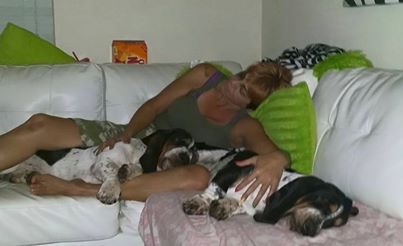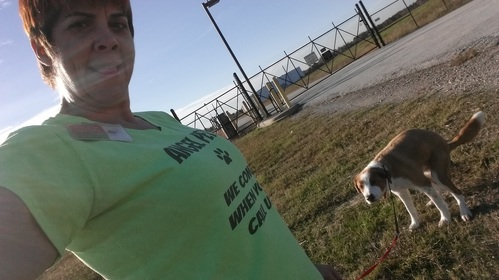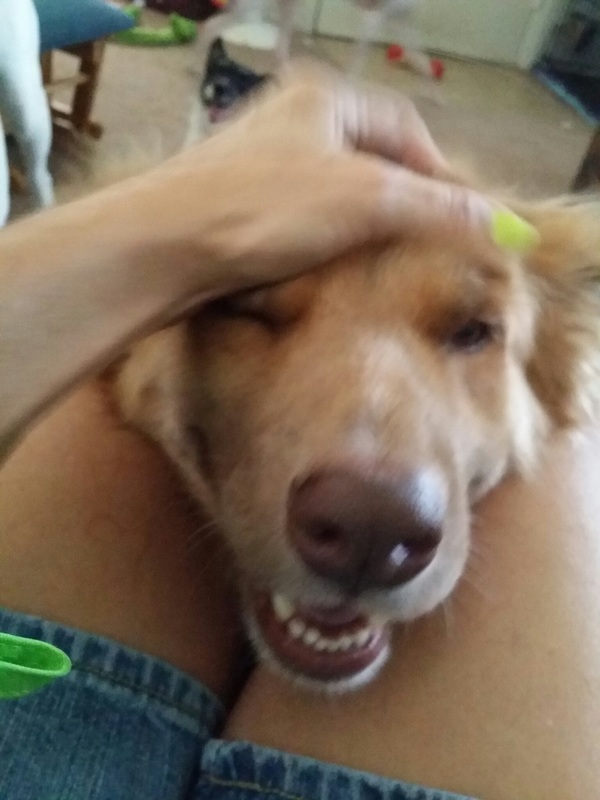
 Animal Planet's new series, The Vet Life, follows three veterinarians who recently moved to Houston to open their very own veterinary practice, animal shelter and mobile clinic. Tune in for the premiere of The Vet Life, Saturday June 4th at 10/9c only on Animal Planet. LEARN MORE
1 Comment
ANIMAL PLANET'S MONSTER WEEK IS BACK AND BIGGER THAN EVER! THIS YEAR, YOU ARE WHAT THEY EAT. IF YOU'RE IN THE MOOD FOR A HEART-RACING, SPINE TINGLING THRILL RIDE, AND LOVE CLINGING TO THE EDGE OF YOUR SEAT, THEN DON'T MISS A MINUTE OF MONSTER WEEK. ANIMAL PLANET IS UNLEASHING ALL SORTS OF FEROCIOUS BEASTS FOR EIGHT NIGHTS OF ENCOUNTERS THAT GET TOO CLOSE FOR COMFORT. FROM SUPER CROCS TO KILLER SWARMS TO LIONS AND TIGERS AND BEARS, OH MY... YOU WON'T BE ABLE TO LOOK AWAY. MONSTER WEEK KICKS OFF WITH AN ALL-NEW RIVER MONSTERS TONIGHT AT 8 CENTRAL ON ANIMAL PLANET.
Big or small, we can board them all. We board 4 to 6 dogs in our home cage free. They will live with us like a pet. If your dog does require kenneling when unsupervised we do have a crate we can put them in when we leave the home. We never leave the dogs unsupervised more than 3 hours at a time.
The dogs in our home get along because of our careful introduction methods. We know dog pack behavior and we introduce all new dogs safely and successfully so that they become a part of the pack and all dogs naturally get along in a pack when there is a confident pack leader. It is a dogs natural survival instinct that makes it get along with other dogs in a pack. Sure they disagree, or play rough, but it was nothing serious, and dogs will be dogs. Your dog will have a blast here in our in home boarding, give it a try! Most puppies up until they are 6 to 10 months old can only hold their bladder for 4 to 5 hours at a time. Puppies can be more easily potty trained when the muscles have developed enough strength to 'hold it' all day while you are work for 8 or 9 hours. If your puppy is having accidents in the house or in the crate it is likely they simply can't hold it long enough even if they want to do the right thing. We have professional dog walkers all over Houston and our visits average $20 per day. Submit an inquiry online to learn more. Daily dog walks to help with potty trainingNeed an electric dog fence to keep your dog contained? An Invisible Fence* system can cost $2,000+. You can do it yourself for about $300. We can help. This free guide, shows you how to install an underground electric dog fence comparable to pros like Invisible Fence * for a fraction of the cost. This Dog Fence DIY guide shows you how to create a pet containment fence.
An electronic dog fence system is a teaching aid to help you teach your dog their boundaries and keep them safely contained. To quickly get up to speed on the basics of dog containment systems, see our dog fence 101 guide. Step 1: Select a Dog Fence SystemFirst, select a system. Our experts have prepared detailed dog fence reviews for every containment system. Our reviews take you through the pros and cons of each and help you find the best system for your dog. The PetSafe YardMax is our favorite overall system.The PetSafe Little Dog is the best choice for small dogs under 12 lbs. For large installations up to 100 acres, the Sport Dog SDF-100 is a good choice. There are also wireless dog fence systems available, although they are not yet as good as the wired systems. The largest range wireless system is the Havahart Radial Wireless 2. The best wireless dog fence collar is the PetSafe Stay + Play. Step 2: Install the Dog FenceSecond, install your dog fence. We begin by designing the layout of the system, planning the boundary lines so that they keep your dog out of trouble but still give them plenty of room to play. We show you how to run the non-correcting twisted wire to give them complete access to the yard. We run the dog fence wire along the perimeter. We show you how to make burying the wire easy, by using a garden edger or a wire laying trencher to do all the hard work. We also show you no-bury solutions such as stapling the wire to the ground or running it along the fence line. If you need to get across a driveway, we can make that painless too. Then power up your system and check that everything is working. Step 3: Train Your DogFinally, we train your dog to obey the new boundaries. Over two weeks, in short ten minute sessions we teach your dog to associate crossing the boundary with the unpleasant sensation of the correction. In the first week we introduce the dog to the system, showing them how we want them to respond to the warning tone by turning and retreating away from the boundary line. In the second week we introduce the correction to teach the dog there is a consequence for ignoring the warning tone. In the last few days of training, we test the dog’s compliance by using your dog’s biggest temptations to make sure they observe the boundary even when excited or chasing another dog. Finally, we introduce the dog to off-leash time in the boundary. Your dog is now safely contained! In later weeks you will remove the training flags, and teach your dog how to safely cross the boundary when you give them permission We know the tips and tricks to make a DIY underground dog fence job easier and cheaper. For example we can show DIYers how to get a dog fence system made by Innotek. the sister company of Invisible Fence* for a fraction of the cost. And we show DIYers how to use everyday garden tools to halve the dog fence installation time. If you find our site useful, please consider purchasing your system from our online dog fence store. We can give you the expert advice that you can’t get anywhere else to make containment easy. We use our buying power to guarantee the best prices online, and have a 30-day money back satisfaction guarantee. Our systems come with a FREE copy of the Dog Fence Expert’s Guide to Installation and Training, that you can instantly download upon purchase (worth $24.95). You also get a FREE Wire Break Kit with all wired systems (worth $14.95). The Wire Break Kit comes with an RF Choke that can be used with all Innotek dog fences (IUC 4100, IUC 5100, SD 2100, SD 3000, and SD 2000) to assist in locating a wire break. The Wire Break Kit also comes with extra wire and splices to provide you with the necessary items to repair a break. If you own a PetSafe or SportDog in-ground dog fence and need to locate a wire break, you’ll need the PetSafe Boundary Wire Break Locator. If you have any questions about choosing a system, installing a dog fence or training your dog, please call us on 1-888-9-DOG-DIY or email us at [email protected]. We also answer reader questions in our dog fence blog. *The Invisible Fence Brand is a registered trademark of Radio Systems Corporation. This site is not affiliated with Invisible Fence. Invisible Fence denotes one particular brand of electric dog fence available. Other dog fence brands include Innotek, PetSafe, Humane Contain, Perimeter Technologies, Dog Watch, Dog Stop and Contain a Pet. Obedient vs. well behaved Owning well behaved dogs is easier than you might think. Obedient vs. Well-Behaved “Does he know any tricks?”
“Oh, yes! He can shake, sit up, roll over, hold a treat on his nose, bark on command, and catch a frisbee!” We’ve all heard something like that, right? Dogs who have been trained to do cool tricks. And we’ve seen K-9 police dogs who are trained to sniff out drugs or explosives, apprehend fugitives, scale walls and many other useful tasks. Those are all examples of well-trained and obedient dogs, and whether you’re teaching your dog obedience, fun tricks or useful tracking & detection skills, training is great for both you and your dog. Training helps strengthen the bond of trust and respect between you and your dog, it reinforces the Leader-Follower relationship by you (the Leader) giving commands and your dog (the Follower) obeying those commands, and it’s an excellent mental and physical workout for your dog. But is that same obedient and highly-trained dog also well-behaved? In other words, what does he do in between commands? When he’s free to do whatever he wants, is he chewing up a shoe or digging up the garden? Is he at the front window barking at the slightest movement outside? Is he counter-surfing for food that was left out? Or is he laying quietly on his bed? When walking past another dog, does he pull on the leash and lunge and bark? Or does he politely and quietly meet other dogs and people? That’s the difference between an obedient dog and a well-behaved dog: self control. Self control is the same for dogs and people: the ability to regulate one’s own behavior and impulses. For example, when your child is at a friend’s house, is she well-mannered? Does she say “Please” and “Thank you”? Does she pick up after herself? After a meal, does she offer to help with the dishes? We teach our children self control as a part of good behavior, and our dogs can learn it, too. So for many dog owners, there’s still more work to be done: the task of teaching your dog self control. We call it Behavior Conditioning. It’s teaching him to make good choices when you allow him the freedom to choose. Some examples of a dog exercising self control are: refraining from nabbing a piece of food off the floor, staying within the confines of the front yard without any physical barrier, not bolting out an open door, not jumping up on people to greet them, avoiding counter-surfing, not chasing squirrels, meeting new dogs calmly and quietly, and bite inhibition. This ability to demonstate self control is one of the most important things you can teach your dog; it results in a well-mannered and predictable dog and that benefits us all. And like any type of training, Behavior Conditioning doesn’t happen overnight. It involves your time and effort. It involves understanding how dogs communicate and ‘Knowing Your Dog’. It involves building a natural bond with your dog through Leadership and Exercise, Trust and Respect—all concepts which dogs instinctively know. This is the core of our philosophy at Good Dog Workshop and it creates the harmony that allows people to achieve the most enjoyable and beneficial relationship with their dogs. Pet sitters do much more than provide a pet with food and water while the pet owner is away from home. A good pet sitter also spends quality time with the animal, gives him exercise and knows how to tell if he needs veterinary attention. What's more, pet sitters typically offer additional services, such as taking in mail and newspapers and watering plants.
But just because someone calls themselves a pet sitter doesn't mean they are qualified to do the job. Why hire a pet sitter?A pet sitter—a professional, qualified individual paid to care for your pet—offers both you and your pets many benefits. Your pet gets:
What should I look for? It's important to learn all you can about a prospective pet sitters' qualifications and services. Before selecting a pet sitter, interview the candidates over the phone or at your home. Find out the following:
Helping the pet sitter and your pet Of course, even the most trustworthy, experienced pet sitter will have trouble if you haven't also kept your end of the bargain. Here are your responsibilities:
Click here to inquire about pet sitting service from Angel Pets of Houston in the NW area - zips 77070, 77429, 77065, and surrounding areas. Most dog owners know their pets needs to be let out 3 times a day no matter how often they eat. But occasionally we do get a request to come only 2 times a day when a client travels - just in the am and pm. Often this request comes from clients who keep their dogs crated while at work and plan to keep them crated the whole time they are away on vacation except during the pet sitter visits. We really do feel sorry for these dogs.
I suppose those owners assume "heck, I only let the dog out once before work, and once after work, so 2 pet sitting visits is enough" - I always hope they are not trying to cut corners and save a few bucks when it comes to the comfort of their pets. Angel Pets will no longer do just 2 visits a day for our dog clients even if the dogs are crated all the time. Let me tell you why..... The main reason dogs need 3 visits a day is - Would you want to hold it that long?! Even if an owner works and is gone for 8 to 10 hours each weekday, and lets their dogs out once in the am around 7ish, and once when they get home from work around 5:30 or 6, that is only one 9 or 10 hour stretch that the dog is holding it. Most owners will also let their dogs out again before bed time at 9 or 10 pm. So the dog is not waiting more than 8 or 10 hours with out being let out repeatedly day after day. Asking a dog to 'hold it' for 3 or 4 days in a row AND for 12 hours at a time every time is just inhumane in our opinion. In addition - when a dog's owners are away and a stranger is caring for it, even if the stranger is a pet sitter the dog knows and sees often, the pet still misses mommy and daddy when they go on vacation or travel. This stress can often cause intestinal distress in the form of diarrhea and even more rarely vomiting. This makes it much more difficult for a dog to wait 12 hours between potty breaks. Now just think about what happens if a dog does have an accident - in it's crate! Poor dog. And poor pet sitter who has to clean up the crate and the dog that has been sitting in it's own urine or feces for a few hours. Of course we bill clients for the extra time we spend cleaning up accidents so it's fair to our pet sitters, but it is not fair to the dog. We see this much too often when we have permitted 2 x a day pet sitting visits in the past. That is why we changed our policy and no longer do 2 x a day dog visits. The only exception is if you dogs are free roaming in the house and have a doggy door, then we can agree to do 2 visits a day for feeding only. We hope you understand that your pets comfort and happiness are our main priority when you travel. We do not want to care for pets who are not valued members of the family. That makes us sad. It makes us want to cry! We only want to care for pets whose owners want to give them the best care possible! Please trust us, we are pet sitters. Anything less than 3 visits a day for your dog, no matter how long he can hold it, is not giving your pet the care he deserves while you are on vacation. And if you really love your pets please consider 30 minute visits instead of 15 minutes, so we can stay and play with and love on your pet after we feed them and let them out to potty. He wont miss you as much if you do! Safe travels my friend! Well we've got our new website up and running and now we're testing out our new blog which we can post to from our phone. Hey, now that's pretty cool!!
Above is a picture of my boy Scooby that I took on as a foster dog and decided to keep. Well that's the end of our test, so let's see how it works!! |
AuthorOwner, Tiffany Cady and her boys Thibodeaux and Scooby Archives
May 2016
Categories
All
|






 RSS Feed
RSS Feed
